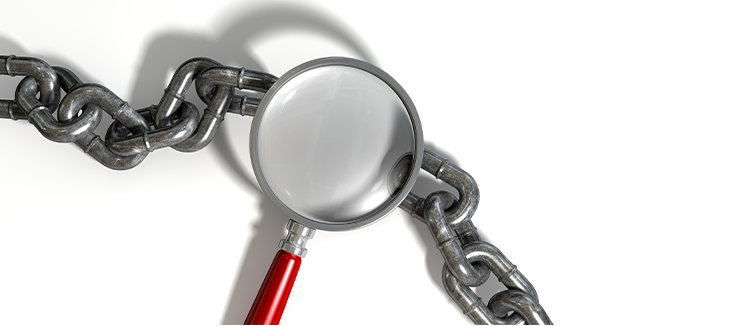Transvaginal ultrasound probes are vital tools in obstetric and gynecological practices, enabling healthcare professionals to obtain critical diagnostic information about female reproductive health. However, the use of these semi-critical medical devices raises significant concerns regarding infection control, particularly when proper cleaning and disinfection protocols are not followed. This article examines documented cases where transvaginal probes have been implicated in infections due to inadequate cleaning and high-level disinfection (HLD), highlighting the importance of stringent infection control measures in healthcare settings.
Understanding the Risks of Transvaginal Probes
Transvaginal probes are classified as semi-critical devices because they come into contact with mucous membranes. According to the Centers for Disease Control and Prevention (CDC), such devices require high-level disinfection to eliminate all microorganisms, except large numbers of bacterial spores. The cleaning process, which precedes disinfection, is crucial in removing organic matter that can interfere with the effectiveness of disinfectants. Inadequate cleaning can result in residual contaminants that provide a protective barrier for pathogens, rendering disinfection ineffective. This scenario can lead to the transmission of infections, posing serious risks to patients. Several documented cases have raised alarms regarding the potential for transvaginal probes to act as vectors for infections.
Documented Cases of Infection Due to Improper Cleaning
One notable case occurred between 2016 and 2018 when a cluster of infections was reported following the use of improperly cleaned medical devices at a healthcare facility in the United States1. Investigations revealed that the facility had not adhered to proper cleaning, disinfection, and sterilization protocols. This culminated in a lawsuit against the hospital by 67 patients with a healthcare-associated infection (HAI) and millions of dollars in payments by the hospital in the resulting fallout. This incident underscored the critical link between improper cleaning practices and the risk of infection transmission.
Another significant case was documented in a healthcare facility in Canada, where patients developed infections following transvaginal ultrasound examinations2. An investigation revealed that the probes had not been cleaned adequately between uses. The facility’s infection control team found evidence of biofilm formation on the probes, which had likely contributed to the persistence of pathogens. This incident prompted a comprehensive review of cleaning protocols and highlighted the need for ongoing staff education regarding infection prevention measures.
The Role of Regulatory Standards and Guidelines
Regulatory bodies such as the CDC and the Association for the Advancement of Medical Instrumentation (AAMI) have established guidelines for the cleaning and disinfection of semi-critical devices like transvaginal probes. These guidelines emphasize the necessity of thorough cleaning to remove bioburden prior to disinfection. Failure to adhere to these standards can result in severe consequences, including patient infections, increased healthcare costs, and legal ramifications for healthcare providers.
Despite the existence of these guidelines, adherence remains inconsistent across healthcare facilities. Factors such as staff training, resource allocation, and the complexity of cleaning procedures can all contribute to lapses in infection control. The documented cases of infections associated with transvaginal probes serve as stark reminders of the potential consequences of neglecting these critical protocols.
Best Practices for Prevention
To mitigate the risk of infections associated with transvaginal probes, healthcare facilities must adopt best practices for cleaning and disinfection. First and foremost, comprehensive training programs for staff are essential to ensure that all personnel understand the importance of proper cleaning protocols and the potential consequences of non-compliance. Regular competency assessments and refresher courses can help maintain high standards of practice.
Additionally, healthcare facilities should implement standardized cleaning protocols based on the latest evidence and guidelines from regulatory bodies. This includes the use of validated cleaning agents and the incorporation of automated cleaning systems where feasible, which can enhance the consistency and effectiveness of the cleaning process. Finally, establishing a robust quality assurance program that includes regular audits of cleaning and disinfection practices can help identify areas for improvement and ensure compliance with established protocols.
In conclusion, documented cases of infections linked to transvaginal probes due to improper cleaning and high-level disinfection underscore the critical importance of stringent infection control measures in healthcare settings. The potential for these semi-critical devices to act as vectors for infection highlight the need for adherence to established cleaning and disinfection protocols. By prioritizing staff education, standardizing cleaning practices, and implementing quality assurance measures, healthcare facilities can significantly reduce the risk of infections and safeguard patient health. The lessons learned from past incidents serve as a call to action for healthcare providers to remain vigilant in their commitment to infection prevention and control. As with other applications in healthcare and society, does this pose a good opportunity to incorporate automation of both the cleaning and high-level disinfection to standardize and create repeatable successful outcomes for both employees and patients? A resounding yes is the only conclusion to come to in order to prevent HAIs.
1. https://topclassactions.com/lawsuit-settlements/closed-settlements/portercare-adventist-health-system-instrument-sterilization-6-5m-class-action-settlement/
2. https://www.ehealthsask.ca/services/resources/Resources/proper-processing-transvaginal-ultrasound-probes.pdf


